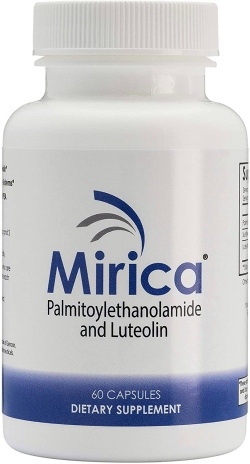PEA Supplements for Migraine?
Supplements don’t tend to have the rigorous and expensive testing behind them that drugs have, but there is a growing interest in PEA, or palmitoylethanolamide, for migraine pain.
PEA is a fatty acid amid which is naturally found in the body. You also get it in your diet, especially if you eat eggs (eggs really are an amazing food). It has been specifically studied for over 60 years, showing a lot of promise as an anti-inflammatory and a pain killer, among many other possible applications.
It’s widely available, and is often recommended for joint pain. And, at least in the short term, it appears to be very safe. These days, it’s even being studied as a treatment for COVID-19 induced lung inflammation.
Long-term studies are lacking, and that is an issue because of its possible application as a headache and migraine preventative. However, because of its excellent safety profile so far, it’s even being studied in children (see this study – 600mg/day).
A study in Australia is looking for participants as I write, to study PEA as an abortive. Patients will take 700mg at the first signs of a migraine attack, and then another 700mg dose if the pain doesn’t go away. If you’re in the area and eligible, you might want to take part in this trial.
It’s always interesting to look at other possible applications of a medication or supplement, especially if you’re taking something as a preventative. PEA has a long list of “possible” benefits, but again, they mostly lack large, high-quality studies. (As I’ve said many times before, this is not necessarily a big strike against a supplement, especially if it seems to be quite safe. Large clinical trials take a lot of money, so a company needs to know they’ll get their money back when they invest. PEA is already widely available and relatively inexpensive, which means there is less monetary motivation for large long term trials. However, there is a lot of interest in PEA, and at least quite a few smaller trials, so there’s actually a fair bit of evidence out there, especially for pain management.)
One benefit that will interest many is its anti-viral and immunity benefits. It may also help fight depression, promote brain health, and fight menstrual pain. Read more here in this 2021 report – Palmitoylethanolamide: A Natural Compound for Health Management.
So although it may not top the list of migraine fighting supplements, if, for example, you’re also struggling with joint pain, or menstrual pain, you might want to give it a try (although I always recommend you talk to your doctor first). You can try it as they’re using it in the Australian study – to take when you start getting a headache or migraine attack. Or, you might want to try it as a preventative.
If you’re trying it as a preventative, it would be good to give it a test run of three months. But remember, we don’t have long-term studies, so do your research, watch for possible side effects, and talk to your doctor.
600-700mg a day is often recommended, but you’ll see anything from 300-1200 daily. For a good summary, see this information at WebMD – Palmitoylethanolamide (Pea). For more in-depth information of how PEA works, this information is a few years old, but still useful (though very technical): Palmitoylethanolamide for the treatment of pain: pharmacokinetics, safety and efficacy

